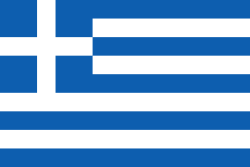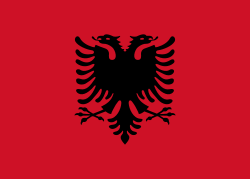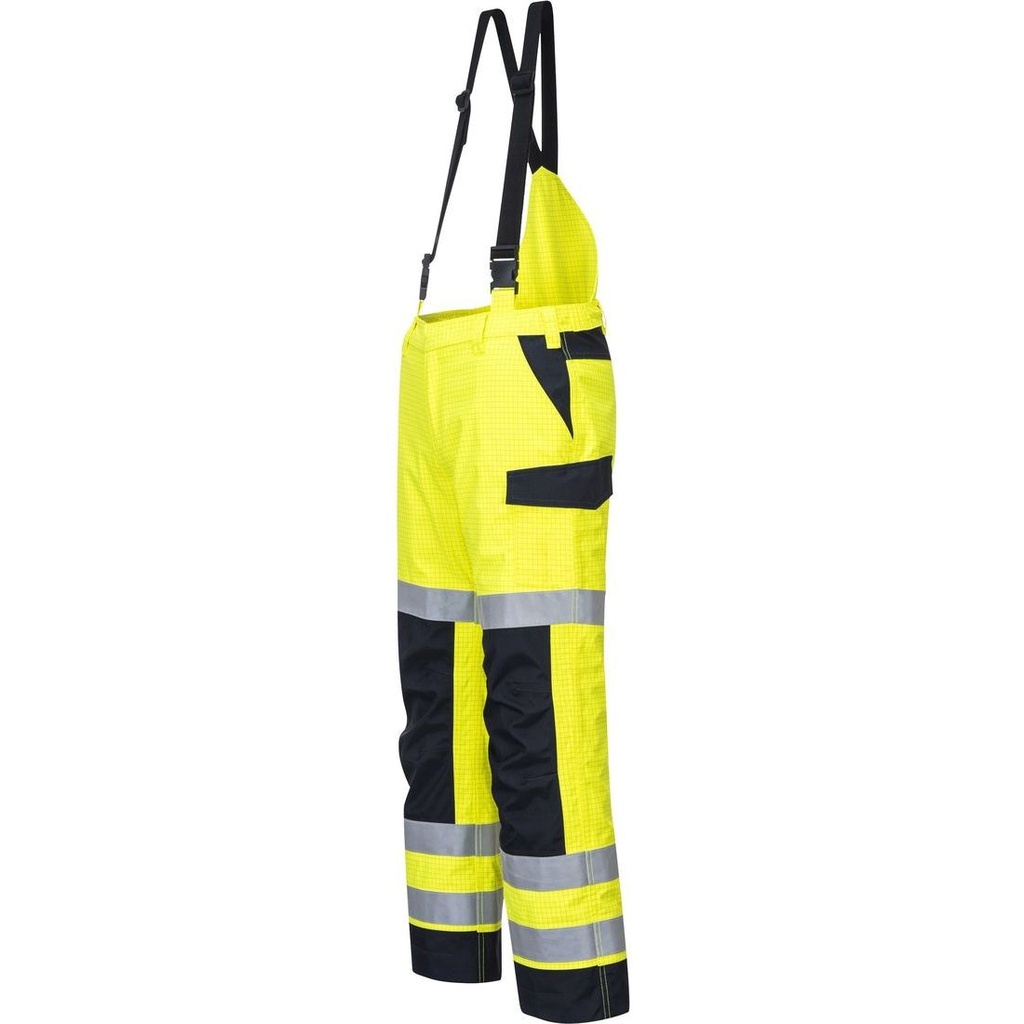MV71 Modaflame Multi Αδιάβροχο Αντιστατική Πυρίμαχη Πολλαπλών Προτύπων Ηλεκτρικού Τόξου Παντελόνι
Το Modaflame Modaflame Αδιάβροχο Πολλαπλών Προτύπων Ηλεκτρικού Τόξου Παντελόνι παρέχει πλήρη προστασία σε μια σειρά προτύπων και είναι γεμάτη με χαρακτηριστικά. Με ένα φερμουάρ στο πίσω μέρος, η σαλοπέτα μπορεί να αφαιρεθεί εντελώς για να μετατραπεί σε παντελόνι που προσθέτει στη συνολική ευελιξία της. Η FR αντανακλαστική ταινία ενισχύει την ορατότητα, ενώ τα δίχρωμα πάνελ γόνατου και ο ποδόγυρος προστατεύουν από τη βρωμιά.
Πρότυπα
Ακτινοβολία, συναγωγή και επαφή θερμότητας
Ελαφρύ, αδιάβροχο ύφασμα με κολλημένες ραφές εμποδίζει τη διείσδυση νερού
Φερμουάρ στην πλάτη μετατρέπει αυτή την φόρμα τιράντα σε παντελόνι για πρόσθετη ευελιξία
Ρυθμιζόμενο ποδόγυρο για να ικανοποιήσει όλα τα μήκη ποδιών
Ρυθμιζόμενες τιράντες με ανθεκτικό κλείσιμο πόρπης
προ-λυγισμένα γόνατα επιτρέπουν την αύξηση ελευθερίας κίνησης
Εσωτερικές τσέπες επιγονατίδων για καλύτερη εμφάνιση
Κρίκος D για κλειδιά ή κάρτες ταυτότητας
Αντιστατικό
Ανθεκτική Premium στη φλόγας αντανακλαστική ταινία
Κολημμένες ραφές για να παρέχει πρόσθετη προστασία
FR βαμβακερή επένδυση για πρόσθετη ζεστασιά και άνεση
Πυρίμαχα κουμπί και φερμουάρ
4 τσέπες για άπλετη αποθήκευση
Χρωματική Αντίθεση για επιπλέον στυλ
CE Πιστοποιημένο
CE-CAT III
Τσέπες επιγονατίδων για την διευκόλυνση τους
Υλικά:
Σκληρό Ύφασμα: Modaflame Αδιάβροχο: 98% Πολυεστέρας, 2% Ανθρακόνημα με Αναπνέουσα επίστρωση PU Ανθεκτική στη φλόγα και είναι ενωμένο με 60% Μοντακριλικό, 40% Βαμβάκι Ανθεκτικό στη Φλόγα, συνολικού βάρους 350γρ , 350γρ
Ύφασμα Επένδυσης: 100% Βαμβακερή επένδυση Ανθεκτική Φλόγας, 170γρ
Πρότυπα
EN ISO 11612 (A1, A2, B1, C1, E3, F1)
EN ISO 11611 Κλασή 2 (A1+A2)
EN 1149-5
IEC 61482-2 IEC 61482-1-2 APC 2
IEC 61482-2 IEC 61482-1-1 (ELIM 32 CAL/CM²)
EN 13034 Τύπος 6
EN ISO 20471 Κλασή 2
RIS 3279 TOM Θέμα 2 (Μόνο Πορτοκαλί)
EN 343 Κλασή 3:1 X

PORTWEST
For over 117 years we’ve possessed an unrelenting ambition to produce the world’s most trusted and requested protective wear. Through the decades, we have continuously proven our dedication to quality, producing world beating safety garments, foot protection, hand protection and PPE, while pushing the boundaries in protection technologies. Technologies that make the workplace a safer place.
EN ISO 20471 Hi-Vis Class 2
EN ISO 20471 is divided into three classes, the requirement for the area consisting of reflectors and fluorescent materials – that determines which class you need to choose. Minimum areas of visible material in m². Class 3: Reflective Tape = 0.20m², Fluorescent material = 0.80m². Class 2: Reflective Tape = 0.13m², Fluorescent material = 0.50m². Class 1: Reflective Tape = 0.10m², Fluorescent material = 0.14m². The highest class is class 3. There are two ways to attain class 3. Either choose an EN ISO 20471 product that is rated class 3 on its own (e.g. a jacket) or choose two products that together are class 3 certified.Details
EN ISO 11612 Heat & Flame
Letter A (EN 15025) This test consists of applying a flame to a fabric sample for 10 seconds. To pass the test, the after flame & smoulder times and formation of holes must be within the tolerances within the standard. The application of a flame can take place in two ways: Code Letter A1 Surface Ignition, ISO15025 A Procedure A (leads to Class A1), the flame is applied horizontally to the face of the fabric No specimen shall permit any part of the lowest boundary of any flame to reach the upper or either vertical edges No specimen shall give hole formation of 5mm or greater in any direction, except for an inter-lining that is used for specific protection other than heat and flame protection. No specimen shall give flaming or molten debris The mean value of after flame time shall be ≤ 2s The mean value of afterglow time shall be ≤ 2s Code Letter A1 Edge Ignition, ISO15025 B Procedure B (leads to Class A2), the flame is applied to the bottom edge of the fabric sample. No specimen shall permit any part of the lowest boundary of any flame to reach the upper or either vertical edges No specimen shall give flaming or molten debris The mean value of after flame time shall be ≤ 2s The mean value of afterglow time shall be ≤ 2s Letter B (ISO 9151) Convective Heat: determination of the heat transmission when exposed to flames. The sample is held above the flame and the rise in temperature on the topside of the sample is measured with a calorimeter. The length of time the sample can remain exposed before its temperature rises by 24 °C is determined. B1: 4 < 10 seconds, B2: 10 < 20 seconds, B3: 21 seconds and longer Letter C (ISO 6942) Exposure to Radiant Heat. In this test, a fabric sample is exposed to radiant heat (infrared rays). The temperature on the reverse (unexposed) side of the sample is registered using a calorimeter. Subsequently, the length of time the sample the sample can remain exposed before its temperature rises by 24°C is measured. The test procedure is the same as ISO 11611, but the classification is different: C1: 7 < 20 seconds, C2: 20 < 50 seconds, C3: 50 < 95 seconds, C4: 95 seconds and longer Letter D and E (ISO 9185) D = Aluminium E = Molten Iron Determining the level of protection against spatters of molten metal. A membrane (with similar properties to human skin) is attached to the reverse of the fabric sample sequentially rising quantities of molten metal (Aluminium or Iron as applicable) are splashed on the sample. The quantity of molten metal which deforms the membrane is determined. The classification for molten aluminium is: D1: 100 < 200 grams, D2: 200 <350 grams, D3: 350 grams and more The classification for molten iron is: E1: 60 < 120 grams, E2: 120 < 200 grams, E3: 200 grams and more Letter F (ISO 12127) This is a new test to establish a value for contact heat. The classification in this respect: F1: 5 < 10 seconds, F2: 10 < 15 seconds, F3: 15 seconds and longerDetails
EN ISO 11611 Welding & Allied
Standard specifies two classes with specific performance requirements. Class 1: is protection against less hazardous welding techniques and situations causing lower levels of spatter and radiant heat. Class 2: is protection against more hazardous welding techniques and situations causing higher levels of spatter and radiant heat.Details
IEC 61482-2 Protective Clothing Thermal Arc Hazards
Standard for protective clothing against the thermal effects of an electric arc event. Two different test methods: Open Arc IEC 61482-1-1 and Box test EN 61482-1-2. OPEN ARC - IEC 61842-1-1 (USA). The first result, ELIM - The maximum incident energy (cal/cm²) the garment can withstand before the wearer would have a 0% probability of a second degree burn. The second result is either: ATPV (Arc Thermal Performance Value, cal/cm²) The maximum incident energy the garment can withstand before the wearer would have 50% probability of a second degree burn or EBT (Energy Break Open Threshold, cal/cm²) The incident energy at which a 50% probability of a breakopen occurs resulting in a second degree burn. Since ELIM indicates an energy value at 0% probability of a second degree burn and ATPV/EBT at 50% probability, the ELIM value is usually lower than ATPV/EBT. Large differences between the ELIM and ATPV/EBT results highlight the importance of wearing several layers of garments to ensure you are properly protected. EN 61482-1-2 (Europe) is evaluated in two classes in the same test: APC1 protects against electric arc of 4kA (arc energy 168 kJ), APC2 protects against electric arc of 7kA (arc energy 320 kJ). Unlike the American standard, there is not a result scale in this garment tests, only two levels where the garment either passes or fails. A garment with one layer of Flame Retardant fabric usually passes APC 1 - even thin shirt fabrics. To pass APC 2, a system with two or three fabric layers or a lined garment is normally required. This makes it more difficult to adapt the protection to the risk, without compromising on comfort. As APC 1 is a relatively low level of protection, we always recommend a basic protection of at least 8 cal/cm².Details
EN 1149 Anti-Static (ATEX)
This standard specifies PPE Clothing used in explosive environments (i.e. ATEX) where there is a risk that the garments could create sparks (source of ignition), which in turn could ignite explosive materials. Anti-Static garments marked EN 1149-5 are intended to be worn in Atex zones 1, 2, 20, 21 and 22. In oxygen enriched atmospheres or in zone 0, the Anti-Static garments should not be used without first being approved by a qualified Safety Engineer, as wear and tear can affect the protection of the garment and it is crucial that they are worn the correct way in these environments.Details
EN 13034 Liquid Chemicals
Standard for protection of a potential exposure to a light spray, liquid aerosols or low pressure, low volume splashes when complete liquid permeation barrier (at a molecular level) is not required. The following chemical groups/chemicals can be tested: H2SO4 30% (Sulphuric acid), NaOH 10% (Sodium hydroxide also called lye and caustic soda), O-xylene, Butanol. The result is given in scale 1-3 where the maximum value is 3. To pass the test and be able to use the EN 13034 symbol in the CE-marking, at least one chemical shall obtain level 3 for liquid repellency and at least one chemical shall obtain level 2 for resistance to penetration.Details
Inherent FR Garments
Inherent fabric guarantees lifelong protection for the wearer. The FR properties lie in the molecular structure of the fibres and cannot be washed or worn out. PROS: excellent heat and ARC protection, excellent colour fastness even after numerous washings hence good cost in use performance, typically lighter weight solutions with excellent comfort levels, typically used in less dirty environments where the corporate look is also important. CONS: limited protection against molten metal splash, typically a more expensive fabric than FR treated. The most common FR fibers used in protective clothing are modacrylics and aramidsDetails
Share this product:
| Χρώμα | ONR Πορτοκαλί/Ναυτικό μπλέ or YNR Κίτρινο/Ναυτικό μπλέ |
| Μέγεθος ρούχων | S - Small or M - Medium or L - Large or XL - XLarge or XXL - XXLarge or XXXL - 3XLARGE |
Once the user has seen at least one product this snippet will be visible.


















